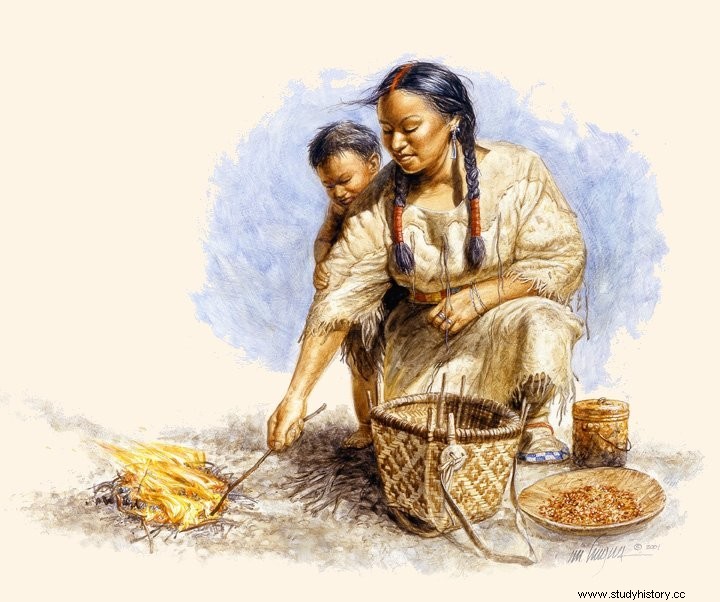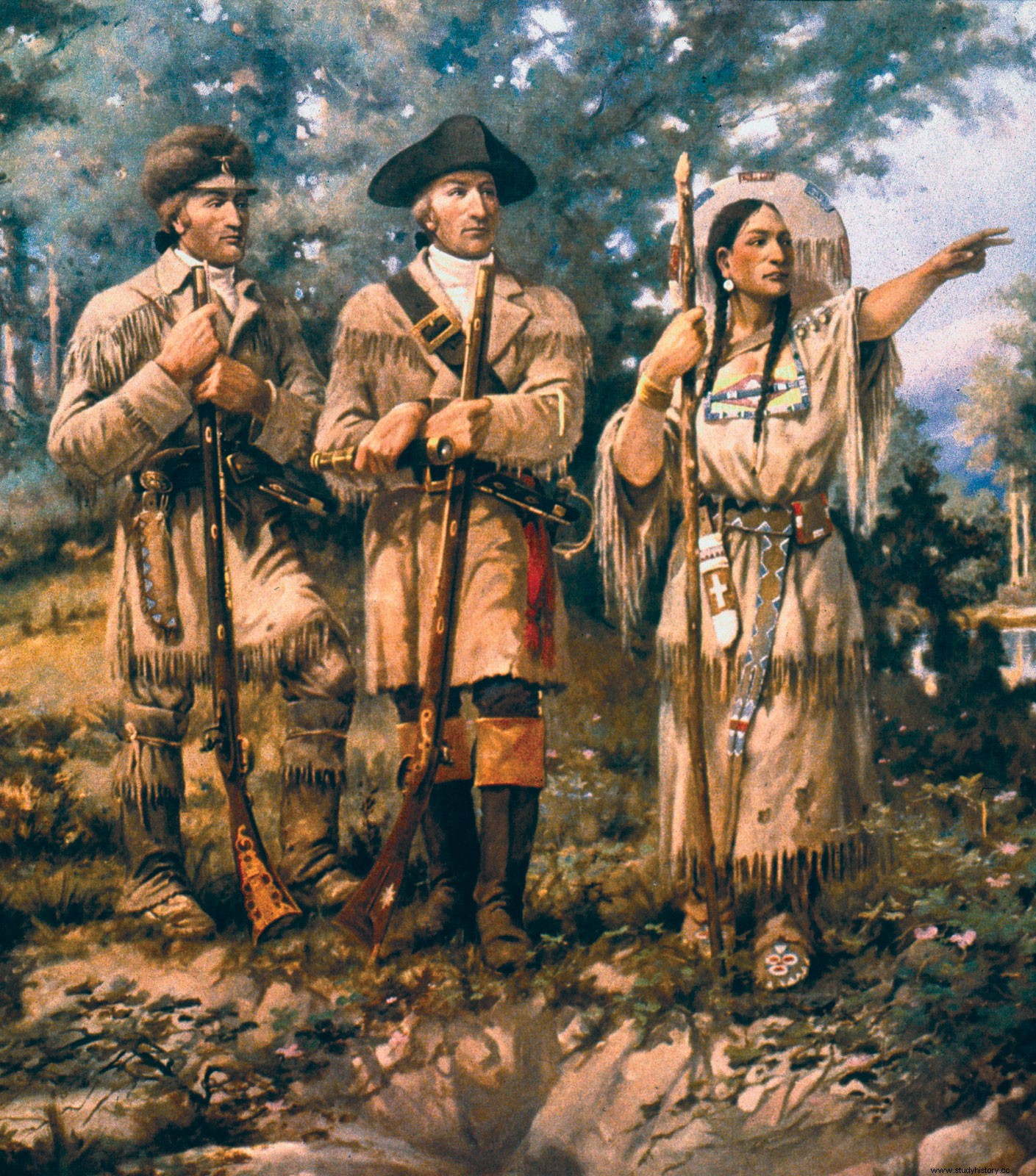Many many years ago, when those “wonderful” mobile applications with which we more or less translate other languages did not even exist in our thoughts, there were some little people who made sure that people who spoke different languages could understand each other. These hard-working professionals spoke at least two languages and were the first responsible for the emergence of the profession from which we, the members of the translation agency, now live. We are talking about the first translators and interpreters. Those forgotten characters of history without whose work none of us would now be messing around here. Today we would like to tell you the story of a pioneering woman in the translation and interpreting sector, a forgotten heroine who, due to her gender, has not achieved the fame she deserves. Today we want to share with the life and work of Sacagawea , the Indian that guaranteed the success of the famous North American expedition of Lewis and Clarke (1804-1806); a great translator who earned the animosity of her contemporaries by indirectly collaborating in the final destruction of her people and her culture.

Sacagawea
You may know that the terms "translator" and "interpreter" are not synonyms. Summarizing it as much as possible, we could say that the translator translates the words from one language to another by means of writing and the interpreter does it orally. Of course, there are many more differences between the two professions, for example, an interpreter does not have time to review their translation while the translator can reread and review before delivering the project to the final client... They are, in short, two different professions. But this article "is not about that" so, to ours:to the history of the great Sacagawea.
We travel back in time to the end of the 18th century and the beginning of the 19th. History remembers those convulsive years as the favorites of the great colonizers of new lands. One of the places preferred by these great men (because they were almost always men, what a coincidence you are) was a wonderful and enormous territory discovered by Christopher Columbus in 1492:the American continent. One of the best-known expeditions of that time was the one led by two first-generation Americans:William Clark (1770-1838) and Meriwether Lewis (1774-1809). Do the surnames sound familiar to you? Surely, because they were the protagonists of the first and most important reconnaissance trip to the American Wild West. The American president of that time, Thomas Jefferson, had proposed to dominate each and every one of the territories of the recent nation before the British, his great enemies, did so. Jefferson ordered the formation of many expeditions that he called “expeditionary corps” – translation of “Corps of Discovery ”- but one of the most significant historically speaking was the so-called “Clark and Lewis Expedition ”.
As we all know from “western” movies, the northern lands of the United States were inhabited by different tribes of American Indians belonging to different ethnic groups. One of the most important groups was called the “Shoshones ”, a term derived from shishinowihs that we could translate in Castilian as "snakes". Even if the name doesn't sound familiar to you, you do remember one of the tribes that formed it:the Comanches, those Indians so well known by moviegoers around the world. The protagonist of our story, Sacagawea , was not born into the Comanche tribe, but into the “agaidikan ” or “salmon eaters”. This tribe was known among European explorers for being very friendly and disliked by other Indian tribes for being overly accommodating to white interlopers. Known familiarly as Janey , Sacagawea was born in 1787 in the Lemhi River Valley, in the current State of Idaho. Sacagawea's history prior to joining the Lewis and Clark Expedition is somewhat unclear, but apparently during her childhood she was captured by an enemy tribe and later sold to an adventurer, fur trader, and well-known translator named Toussaint Charbonneau .

Lewis, Clark and Sacagawea
Toussaint Charbonneau was a French Canadian descendant of great colonizers from old Europe. The pioneer Charbonneau made a living by hunting and trading furs for a famous British company called “North West Company ”, But in his spare time he also earned some money serving as a translator on settler expeditions. According to legend, the good man from Charbonneau loved the lifestyle of the Indians, he liked to fraternize with the surrounding tribes so much that after marrying a beautiful Indian woman he did not hesitate to buy the young Sacagawea so that she would become his second wife. The story of the couple was one of many and would not have transcended beyond the family bible if it had not been for a coincidence. In the month of November 1804, the Lewis and Clark expeditionaries arrived in their town looking for translators and interpreters to help them understand the Indian tribes in their expedition to annex the remote regions of Louisiana and Oregon. Charbonneau was one of the translators chosen, not only because he was fluent in several languages, but also because his second wife, little Sacagawea, spoke the Shoshone language.
Sacagawea soon took center stage from her talkative husband, not only because she was fluent in English, French, and Shoshone, but because she, along with hers, her newborn son Jean-Baptiste They projected a friendly image that softened the first contacts with the native peoples, which, on many occasions, was the first time they saw "pale faces". The result of your work? The success of the expedition…and a reward:Charbonneau received 320 acres of land and $500; Sacagawea, nothing.
Unfortunately the story did not end with "they ate partridges and lived happily ever after". Those were bad times for everyone and our translator and interpreter Sacagawea died alone in Fort Manuel at just 25 years old. After her death, Clark became legal guardian of her children, Jean-Baptiste and Lisette , just a few months. Not a single image of her has remained, but there is a moral:the great translators can change the history of humanity with her work.
